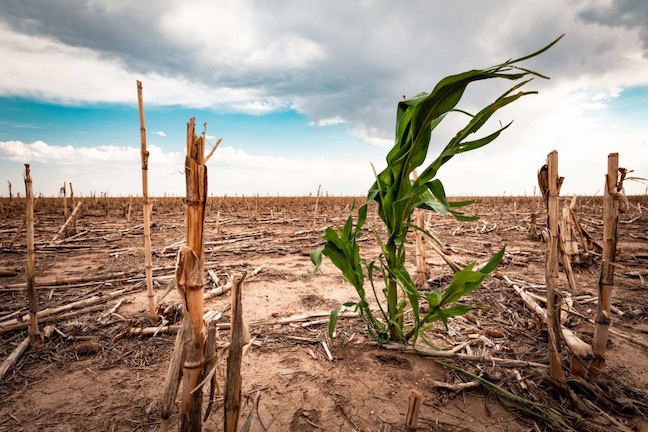Government officials have announced the establishment of two scientific committees aimed at creating an advanced nationwide agricultural weather information system and implementing technology-driven assessments of crop yields to mitigate the impacts of extreme weather associated with climate change.
These committees consist of experts from various fields and representatives from multiple states. Anchored in the Mahalanobis National Crop Forecast Centre in New Delhi, they aim to enhance responses to the climate crisis, which has adversely affected yields and farm incomes.
Climate Change and Agriculture Sector
A significant portion of India’s workforce is employed in agriculture, contributing 18% to the country’s GDP. Climate scientists have consistently warned about the threats posed by severe heatwaves, shifting rainfall patterns, and flooding to India’s food security, particularly its rice and wheat crops, which are vital for feeding the nation.
In recent years, heatwaves have significantly impacted India’s wheat production. High temperatures during harvest seasons in 2022 and 2023 led to reduced wheat yields. In addition, India experienced its hottest March on record two years ago, resulting in a loss of 3 million tonnes of the winter staple. Delayed monsoon surges over the past three years have caused flooding in several states, damaging oilseed and pulse crops and delaying rice harvesting.
Weather disruptions have led to a 16-year low in federally held wheat stocks this month. Reduced food stocks have forced India to impose bans on wheat, rice, and onion exports, which are still in effect, causing financial losses for farmers.
Data Collection
The first committee’s objective is to deploy a network of high-tech automatic weather stations to collect timely data and forecasts, aiding farmers and policymakers in better preparation for temperature fluctuations, droughts, and extreme rainfall events.
India’s vulnerability to climate change was underscored in the first of the four Intergovernmental Panel on Climate Change (IPCC) reports in 2022, which highlighted evidence of a changing monsoon, rising sea levels, more intense heatwaves, severe storms, flooding, and glacial melting. The monsoon rainfall system, vital for the country’s agriculture, irrigates 60% of its crops.
Agriculture is particularly susceptible to climate risks due to its visibility, according to studies. The government’s Economic Survey of 2017-18 estimated that extreme weather events and droughts, resulting in rainfall losses exceeding 40% of the median, could reduce farmer incomes by up to 14%.
Understanding Losses
The second committee aims to expedite the assessment of yield losses caused by extreme weather events to facilitate prompt payouts under the flagship Pradhan Mantri Fasal Bima Yojana (Prime Minister’s Crop Insurance Scheme). Scientists are exploring satellite data and artificial intelligence technologies for yield estimation. Improved yield estimates are crucial for national food security in light of frequent shifts in weather patterns.
The government is embracing advanced technologies for crop output estimation. The ministry is piloting a program called Yield Estimation System based on Technology (YES-Tech) for rice and wheat data collection, utilizing satellite and remote sensing data.
The YES-Tech program is currently focused on estimating crop losses to enhance the implementation of the farm insurance scheme.
Rising temperatures have heightened resource demands in Indian agriculture. Studies by the Indian Council of Agricultural Research (ICAR) show that farming in states like Andhra Pradesh, Punjab, and Rajasthan now requires up to 30% more water due to increased evaporative demand and extended crop durations.
In Himachal Pradesh, apple orchards are relocating to higher altitudes due to insufficient cold weather. According to ICAR studies, temperatures have risen in apple-growing regions, while precipitation has decreased in Lahaul and Spiti and Kinnaur in recent years.


